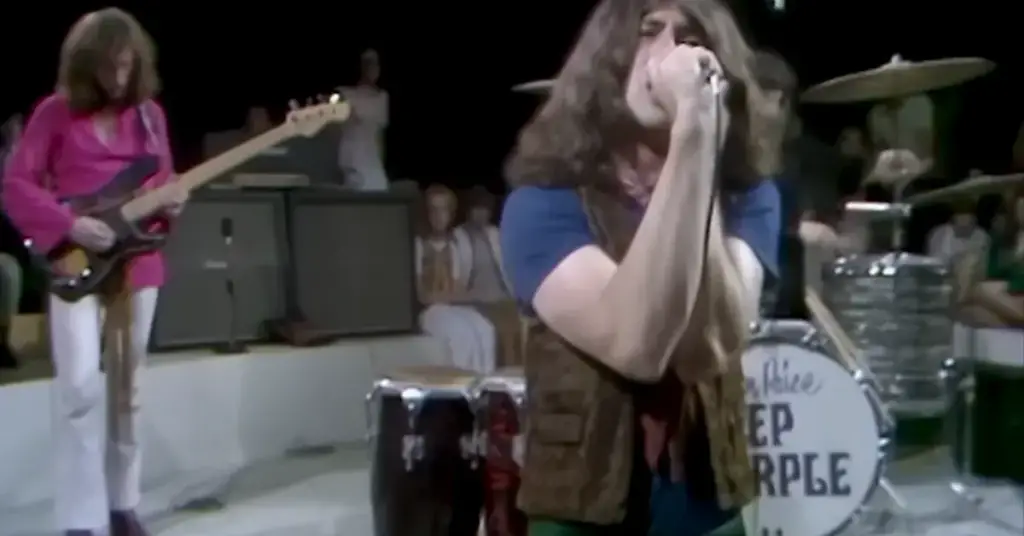Deep Purple – “Child in Time”: A Cry for Peace Carried on a Wail of Thunder
There are rock songs. And then there are epics—songs that seem to open a portal to something greater, darker, and deeper. “Child in Time” by Deep Purple is one of those rare pieces. At over 10 minutes long, this track from their 1970 album Deep Purple in Rock is not merely a song—it’s a lament, a warning, and a storm.
Part prayer, part scream, “Child in Time” captures the chaotic spirit of a generation standing on the edge of the nuclear abyss, and delivers it with such intensity that it still sends shivers down the spine more than five decades later.
The Sound: Slow-Burn to Supernova
“Child in Time” starts with Jon Lord’s eerie, church-like organ—a motif inspired loosely by the Cold War-era protest ballad “Bombay Calling” by It’s a Beautiful Day. But what follows is wholly Deep Purple: a masterful tension-and-release journey from ghostly calm to explosive fury.
Ian Gillan’s voice begins fragile, almost whispered, singing in a haunting falsetto:
“Sweet child in time, you’ll see the line…”
But as the song builds, Gillan’s vocals rise to a series of banshee-like wails—not showy, but searing, as if he’s channeling every ounce of human anguish. It’s one of the most chilling, virtuosic performances in rock history.
Ritchie Blackmore’s guitar solo is a masterclass in slow-burning emotion. It begins bluesy, restrained, then crescendos into a frenzied explosion of notes that mirrors the chaos and fury at the heart of the song. Meanwhile, Ian Paice’s drumming and Roger Glover’s bass give the entire structure an unstoppable momentum.
This isn’t music you tap your foot to. It’s music that takes you over.
The Message: Cold War Paranoia and the Cost of Conflict
Though the lyrics are sparse, their message is chillingly clear. “Child in Time” is a meditation on innocence lost, and a warning about the violence humanity inflicts upon itself, especially in times of political madness.
“You’re the innocent, you’re the guilty one…”
The song reflects the backdrop of the Cold War, the Vietnam War, and the growing sense of global unease in the late 1960s and early ‘70s. It speaks of death, destruction, and the lies that lead young people to war—casting both leaders and soldiers as victims of a cycle that repeats endlessly.
Gillan himself once said the song was “anti-war, anti-hypocrisy, and anti-stupidity.”
Live Performances: Lightning in Real Time
On stage, “Child in Time” was a volcanic centerpiece of Deep Purple’s live shows during their early years. Ian Gillan’s live screams became the stuff of legend, and Ritchie Blackmore often stretched the solo into long, wild improvisations that showcased his genius.
One of the most powerful renditions is captured on Made in Japan (1972), where the band unleashes the full fury of the song with a level of energy that no studio could contain. It’s not just a performance—it’s a spiritual exorcism in front of thousands.
Legacy: A Moment Frozen in Flame
Though Deep Purple would go on to define hard rock with thunderous riffs like “Smoke on the Water” and “Highway Star,” “Child in Time” stands apart as their most emotionally complex and musically daring statement.
Despite its length and intensity, it became a beloved classic among fans and remains one of their most requested songs—even though the band stopped playing it live after the mid-1990s, as Gillan no longer wanted to revisit the vocal demands or the painful themes.
The song has also gained mythical status behind the Iron Curtain, where its anti-war message resonated deeply. In places like Yugoslavia and East Germany, “Child in Time” was seen as a cry of solidarity from the West—proof that the music transcended borders even when people couldn’t.

Final Thoughts
“Child in Time” isn’t just a song you hear.
It’s a vision you witness.
A warning you feel deep in your bones.
With its soaring vocals, searing guitar, and unflinching message, it reminds us:
When we forget the cost of violence, the children will always pay the price.
And in that cry—that unforgettable wail—Deep Purple etched a timeless plea into the heart of rock history.


Facebook Comments